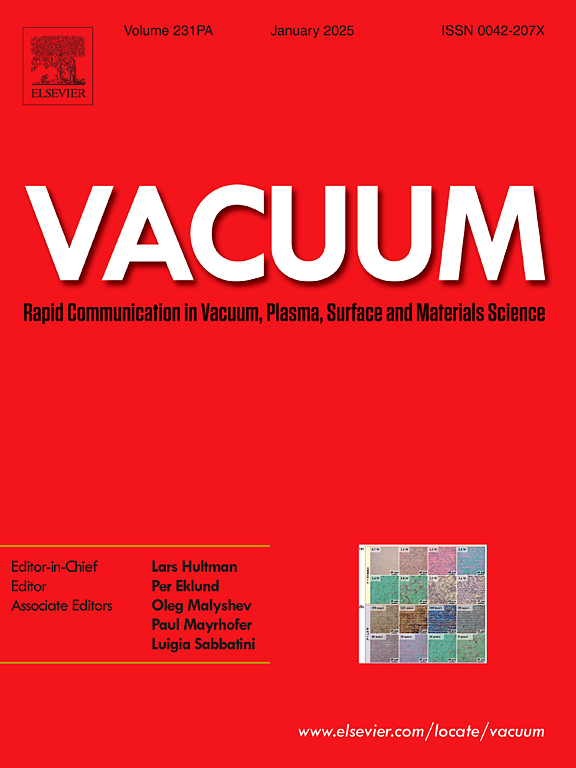Characterization of on-state resistance of electrically-triggered vacuum surface flashover switch
IF 3.9
2区 材料科学
Q2 MATERIALS SCIENCE, MULTIDISCIPLINARY
引用次数: 0
Abstract
The electrically triggered vacuum surface flashover switch (VSFS) has the advantages of high-speed conduction, fast insulation recovery, compact size, and simple construction, making it well-suited for high voltage and high-power conversion applications. The on-state resistance, as a critical parameter of the VSFS, directly influences the output efficiency and lifetime of the pulse power system. In this paper, a theoretical model of the VSFS on-state resistance is proposed, and the effect of different phases of channel development on the on-state resistance is also investigated. Specifically, it covers the channel expansion and channel resistivity decline during three distinct developmental phases, the establishment of vacuum-stream channel, the resistance collapse of vacuum-stream channel, and the on state. The theoretical model demonstrates that increasing the operating voltage can effectively expand the channel width, and the channel voltage in the on-state is negative to the channel resistivity. Finally, the variation trend of the VSFS on-state resistance under square wave and exponential decay conditions was calculated using experimental waveforms, and the experimental results are consistent with the theoretical analysis.
电触发真空表面闪络开关导通电阻特性研究
电触发真空表面闪络开关(VSFS)具有高速传导、快速绝缘恢复、体积紧凑、结构简单等优点,非常适合于高压和大功率转换应用。导通电阻作为脉冲电源系统的一个重要参数,直接影响脉冲电源系统的输出效率和寿命。本文提出了一种VSFS导通电阻的理论模型,并研究了通道发育的不同阶段对导通电阻的影响。具体来说,它涵盖了三个不同发育阶段的通道扩张和通道电阻率下降,真空通道的建立,真空通道的电阻崩溃和导通状态。理论模型表明,增加工作电压可以有效地扩大沟道宽度,导通状态下的沟道电压与沟道电阻率呈负相关。最后,利用实验波形计算了vfs在方波和指数衰减条件下的导态电阻变化趋势,实验结果与理论分析相吻合。
本文章由计算机程序翻译,如有差异,请以英文原文为准。
求助全文
约1分钟内获得全文
求助全文
来源期刊

Vacuum
工程技术-材料科学:综合
CiteScore
6.80
自引率
17.50%
发文量
0
审稿时长
34 days
期刊介绍:
Vacuum is an international rapid publications journal with a focus on short communication. All papers are peer-reviewed, with the review process for short communication geared towards very fast turnaround times. The journal also published full research papers, thematic issues and selected papers from leading conferences.
A report in Vacuum should represent a major advance in an area that involves a controlled environment at pressures of one atmosphere or below.
The scope of the journal includes:
1. Vacuum; original developments in vacuum pumping and instrumentation, vacuum measurement, vacuum gas dynamics, gas-surface interactions, surface treatment for UHV applications and low outgassing, vacuum melting, sintering, and vacuum metrology. Technology and solutions for large-scale facilities (e.g., particle accelerators and fusion devices). New instrumentation ( e.g., detectors and electron microscopes).
2. Plasma science; advances in PVD, CVD, plasma-assisted CVD, ion sources, deposition processes and analysis.
3. Surface science; surface engineering, surface chemistry, surface analysis, crystal growth, ion-surface interactions and etching, nanometer-scale processing, surface modification.
4. Materials science; novel functional or structural materials. Metals, ceramics, and polymers. Experiments, simulations, and modelling for understanding structure-property relationships. Thin films and coatings. Nanostructures and ion implantation.
 求助内容:
求助内容: 应助结果提醒方式:
应助结果提醒方式:


